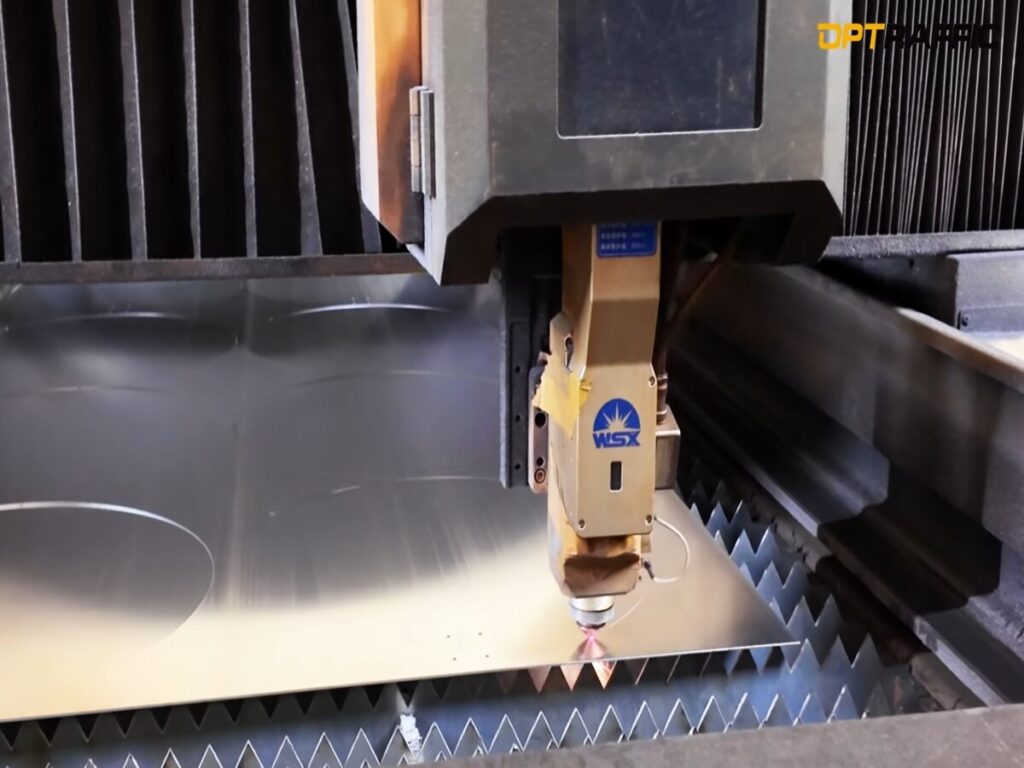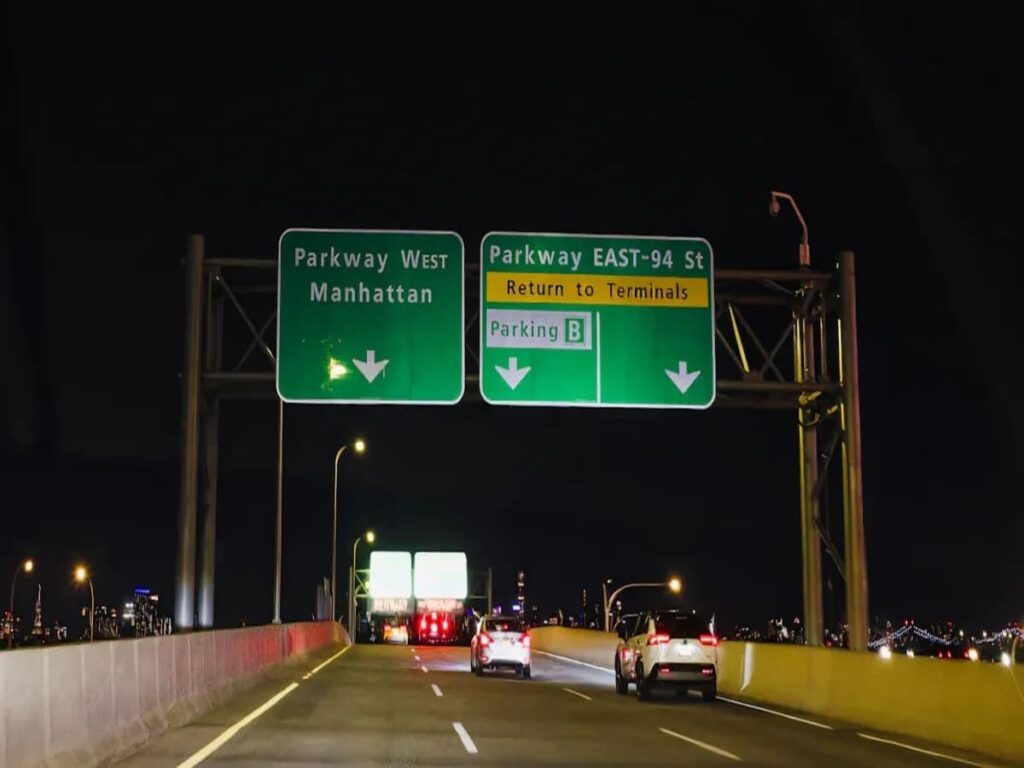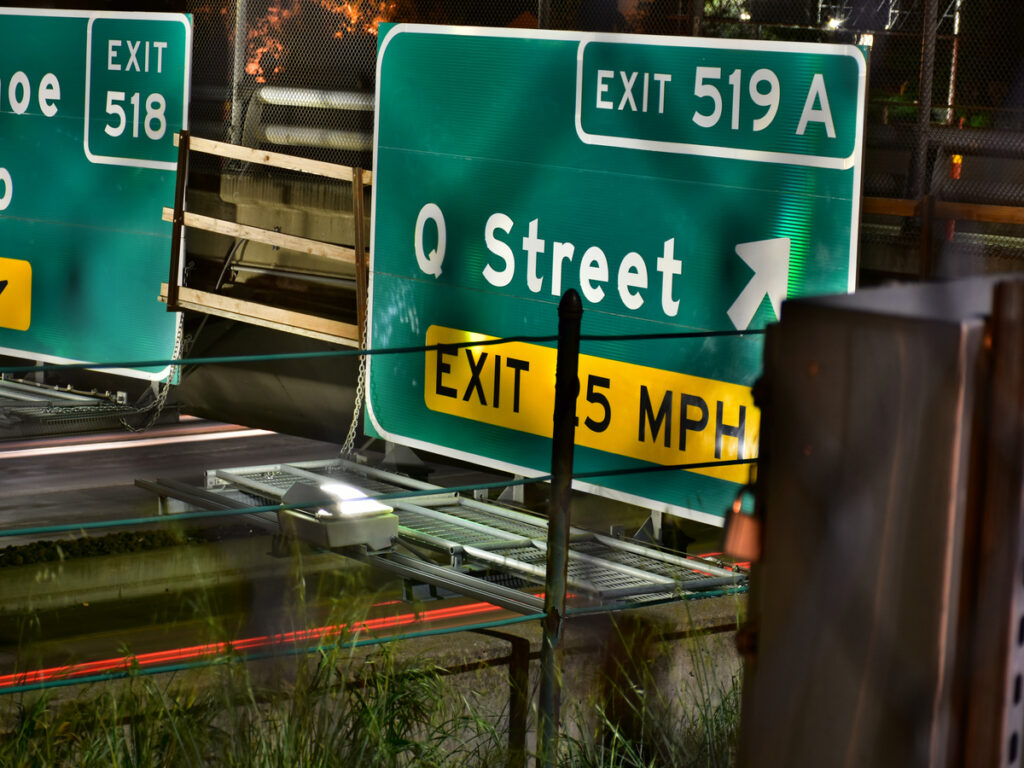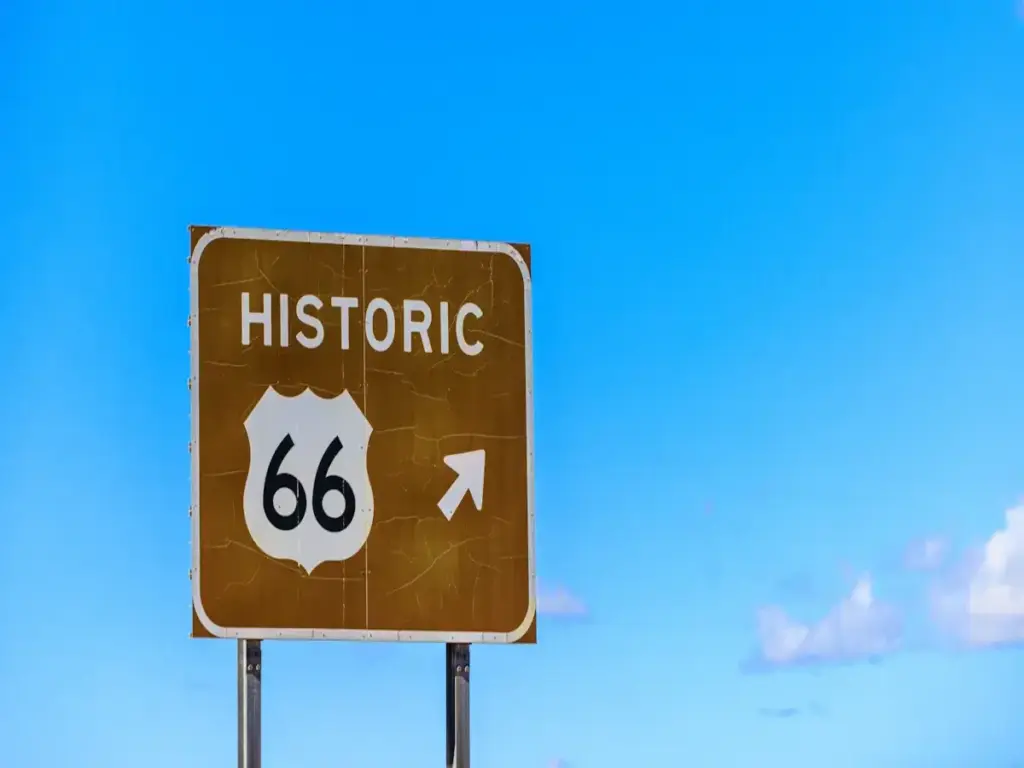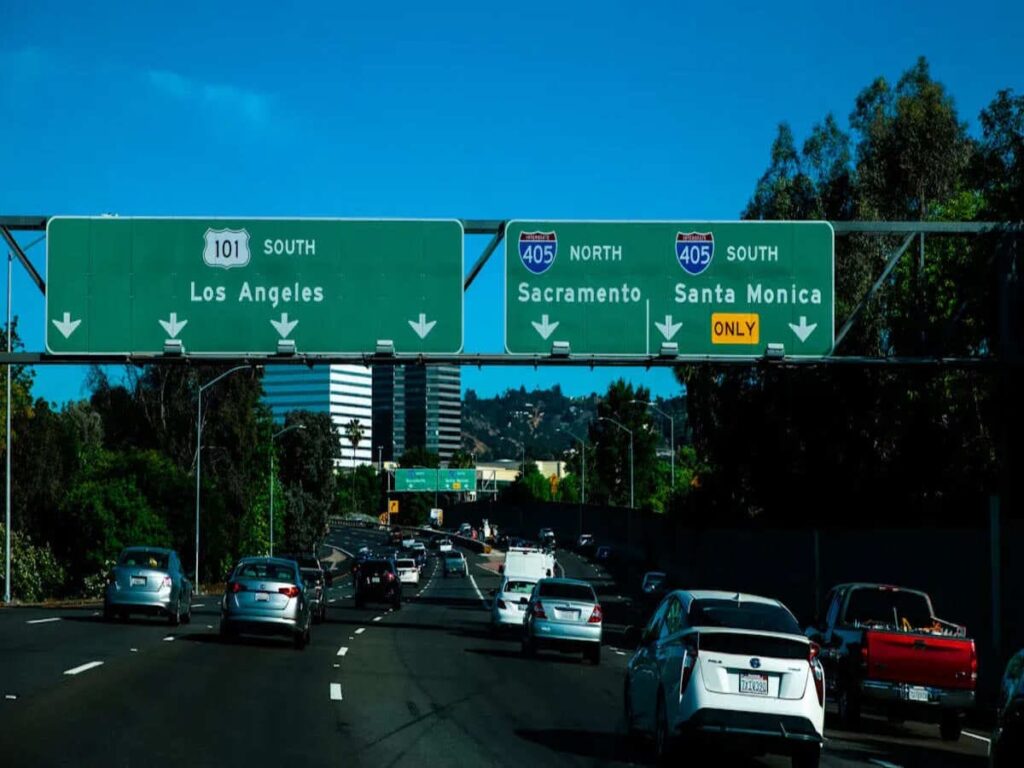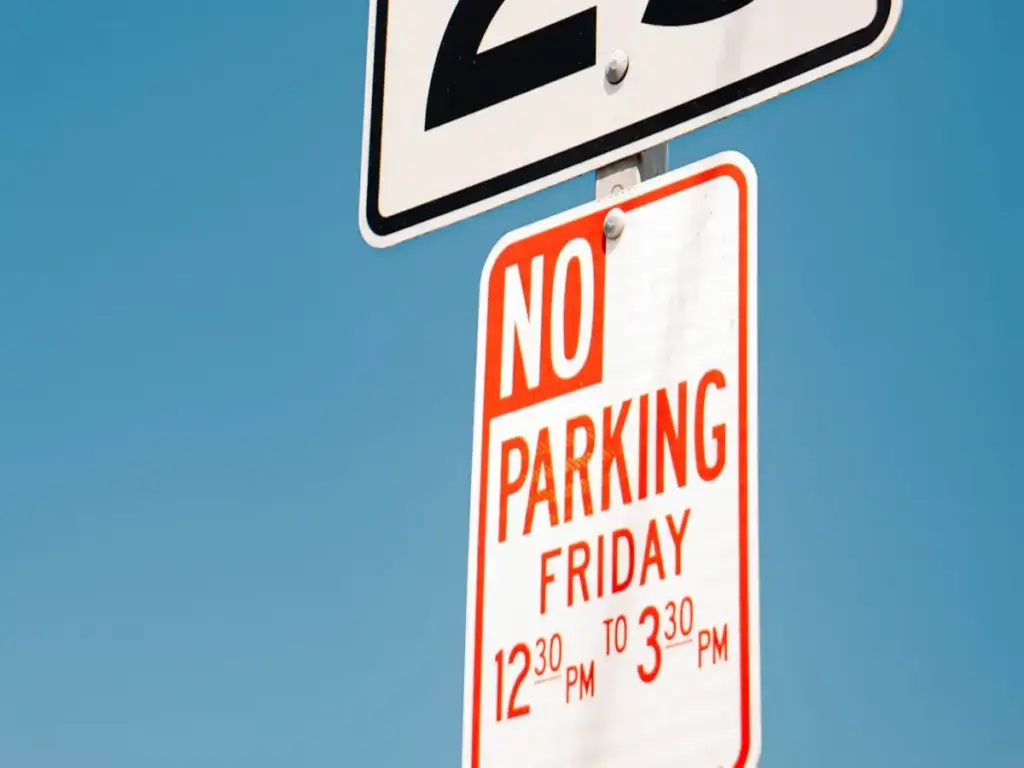
Möglicherweise fragen Sie sich, ob Sie Verkehrsstoppschilder auf Ihrer eigenen Immobilie oder auf einer Arbeitsseite installieren können. In den meisten Regionen, Nur Regierungsbehörden oder autorisierte Mitarbeiter dürfen diese Zeichen auf öffentlichen Straßen platzieren. Die Installation eines Verkehrsstoppschilds ohne Erlaubnis kann zu Geldstrafen und Haftung führen. Auf Privatbesitz, Sie haben mehr Flexibilität, Sie müssen jedoch noch den lokalen Vorschriften einhalten. Für vorübergehende Situationen, Die Verwendung von Verkehrskegeln oder tragbaren Zeichen ist eine sicherere und rechtliche Alternative.
Bei OPTRAFFIC, Wir bieten konforme und tragbare Verkehrsmanagementlösungen wie temporäre Stoppschilder an, Pfeilbretter, Und Verkehrskegel-ideal für private Baustellen oder kurzfristige Ereignisse. Erforschen Sie unsere Zuverlässigkeitsspanne Verkehrszeichen zum Verkauf um sicher und im Gesetz zu bleiben.
Key Takeaways
- Sie dürfen keine Stoppschilder auf öffentlichen Straßen platzieren, es sei denn, die Regierung sagt, dass Sie es können.
- Auf Privatbesitz, Sie können Stoppschilder aufstellen, Sie müssen jedoch den örtlichen Gesetzen und Sicherheitsregeln befolgen, damit Sie keine Geldstrafe erhalten oder Unfälle verursachen.
- Erhalten Sie immer die richtigen Genehmigungen und Genehmigungen, bevor Sie ein Stoppschild aufstellen, um sicherzustellen, dass Ihr Projekt legal und sicher ist.
- Folgen Sie dem Handbuch auf einheitlichen Verkehrssteuerungsvorrichtungen (MUTCD) Regeln für die Größe, Farbe, Platzierung, Und wie einfach es ist, das Schild zu sehen, um die Fahrer sicher zu halten.
- Verwenden Sie Dinge wie Verkehrskegel oder tragbare Schilder für die kurzfristige Verkehrskontrolle, anstatt ein dauerhaftes Stoppschild aufzubauen.
Verkehrsstoppschilder: Rechtliche Grundlagen
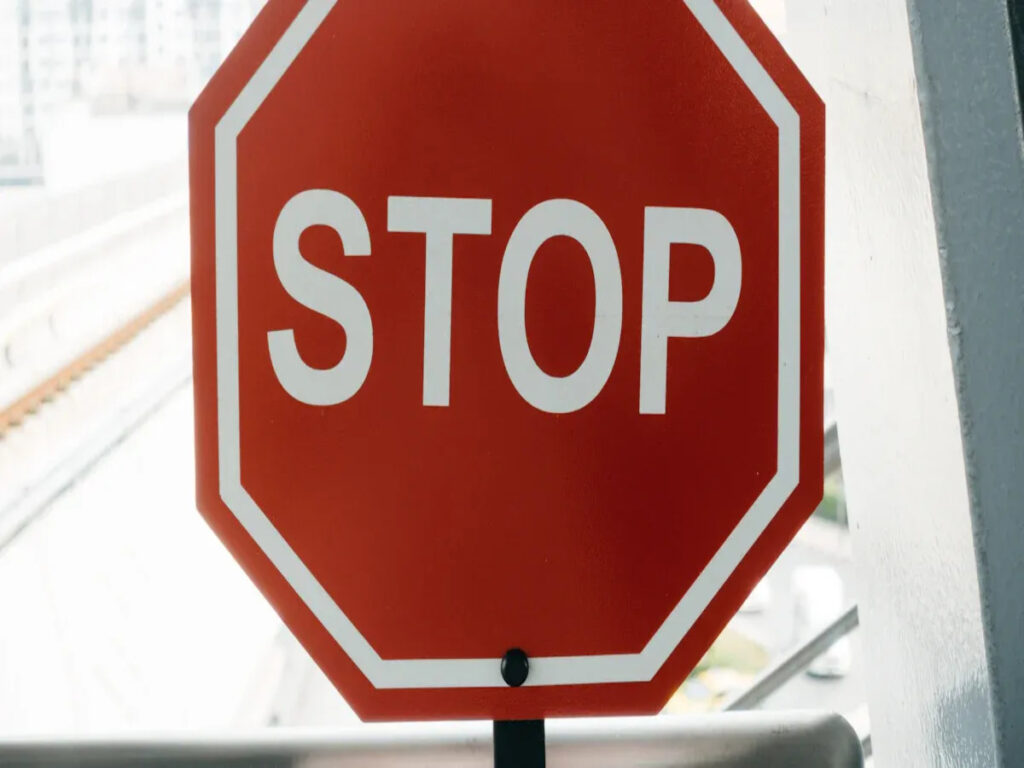
Öffentliche Straßen
Sie dürfen auf öffentlichen Straßen keine Verkehrsstoppschilder aufstellen, es sei denn, Sie haben eine offizielle Genehmigung. Regierungsbehörden sind für diese Zeichen zuständig, um die Menschen zu schützen und sicherzustellen, dass sich der Verkehr gut bewegt. Nur Arbeiter oder Auftragnehmer, die die Erlaubnis haben. Wenn Sie ein Schild ohne Erlaubnis aufstellen, Sie könnten eine Geldstrafe erhalten, rechtliche Probleme haben, oder sogar strafrechtliche Anklagen erhalten.
Notiz: Der Amerikanische Vereinigung der staatlichen Highway -Beamten (Asho) machte das rote Octagon Stop -Zeichen Standard in 1954. Der Wiener Übereinkommen über Straßenschilder und Signale (1968) Hilft Ländern auch, zu entscheiden, wie sie diese Zeichen entwerfen und nutzen können. In den Vereinigten Staaten, staatliche und lokale Gesetze, wie die Texas Transportcode, Lassen Sie die Behörden die Anzeichen für Verkehrsstopps aufstellen und kümmern. Anzeichen, die nicht erlaubt sind, sind illegal und zählen nicht als echte Stoppschilder.
Lokale und Landesregierungen haben strenge Regeln, wie Zeichen aussehen, wohin sie gehen, und wie sicher sie in Abstürzen sind. Diese Regeln helfen den Fahrern, zu wissen, welche Zeichen real sind, und stoppen Verwirrung. Wenn Sie ein falsches Zeichen aufstellen, Sie könnten bekommen:
- Geldstrafen oder andere Strafen
- Punkte auf Ihrem Führerschein
- Höhere Versicherungsrechnungen
- Schuld, wenn es einen Absturz gibt
Stoppen Sie Schilder auf Privateigentum
Sie haben mehr Auswahlmöglichkeiten, wenn Sie Stoppschilder auf Privateigentum aufstellen, Wie Parkplätze, Gated Viertel, oder Geschäftsbereiche. Viele Immobilienbesitzer nutzen Verkehrsstoppschilder, um Autos zu helfen, sich sicher zu bewegen und die Menschen zu schützen. Sie müssen jedoch immer noch lokale Regeln und nationale Standards befolgen, wie groß das Zeichen ist, Welche Farbe hat es, was es sagt, Und wie gut es Licht reflektiert.
- Lokale Regeln sagen oft, dass Sie Schilder verwenden müssen, die dem Handbuch auf einheitlichen Verkehrssteuerungsgeräten folgen (MUTCD) oder ähnliche Regeln.
- Wenn Sie Schilder an den richtigen Ort stellen und sie leicht zu sehen, können die Fahrer wissen, was zu tun ist.
- Das Befolgen der Regeln kann Ihnen helfen, Geldstrafen zu vermeiden, Unfälle stoppen, und senken Sie Ihr Risiko, wenn etwas schief geht.
Custom Stop -Schilder auf Privateigentum können die Dinge sicherer und organisierter machen. Unternehmen wie Verizon, Ziel, und Choice Hotels nutzen diese Schilder, um den Verkehr zu kontrollieren und die Menschen in ihrem Land zu schützen. Gute Zeichen helfen dabei, alle zu schützen und Ihre Community gut aussehen zu lassen.
Wenn Sie die Regeln nicht befolgen, Sie könnten große Geldstrafen bekommen oder beschuldigt werden, wenn etwas Schlimmes passiert. Fragen Sie immer Ihre lokale Regierung, bevor Sie Verkehrsstoppschilder auf Privateigentum aufstellen.
Gesetzliche Anforderungen
Lokale Gesetze und Codes
Sie müssen lokale Gesetze befolgen, wenn Sie Verkehrsstoppschilder aufstellen. Jede Stadt und jeder Staat hat ihre eigenen Regeln. Diese Regeln helfen, Straßen sicher und Verkehr in Bewegung zu halten. Zum Beispiel, in San Marino, Ca., Der Stadtrat muss die Installation des Stoppschilds genehmigen. Sie tun dies nur, wenn bestimmte Dinge passieren. Diese Dinge beinhalten schlechte Sichtbarkeit, Viele Leute laufen, oder viele Unfälle. In Missouri, Das Verkehrsministerium verwendet Studien, um Stoppschildplätze auszuwählen. Sie überprüfen, wie sich Autos bewegen, Wie weit Treiber sehen können, und wenn Menschen in Sicherheit sind. Der Handbuch der Federal Highway Administration auf einheitlichen Verkehrskontrollgeräten (MUTCD) ist das nationale Regelbuch. Es heißt, Stoppschilder müssen auf der rechten Straßenseite gehen. Die Fahrer müssen sie leicht sehen können. Überprüfen Sie immer Ihre örtlichen Gesetze, bevor Sie Zeichen aufstellen.
Tipp: Lokale Verkehrsgesetze können sich ändern. Schauen Sie sich immer die neuesten Regeln an, bevor Sie Ihr Projekt starten.
Ermöglicht und Genehmigungen
Sie benötigen Genehmigungen, um Verkehrsstoppschilder aufzubauen, Sogar auf privatem Land manchmal. Lokale Beamte möchten oft Ihre Pläne und Karten sehen. Möglicherweise müssen Sie zeigen, wie Ihr Zeichen den Verkehr und die Sicherheit verändert. Einige Jobs benötigen spezielle Schecks oder öffentliche Treffen. Die Art der Erlaubnis, die Sie benötigen, hängt von Ihrem Zeichen ab. Für ein großes Zeichen, Möglicherweise benötigen Sie eine Baugenehmigung. Für ein Schild mit Lichtern, Möglicherweise benötigen Sie eine elektrische Erlaubnis. Zonierungsgesetze sagen, wohin Zeichen gehen können und wie groß sie sein können. Wenn Sie keine Genehmigung erhalten, Sie können eine weitere Chance bitten. Viele Immobilienbesitzer erhalten Hilfe von Experten dafür. Wenn Sie die Dinge richtig machen, können Sie Ihr Projekt legal und sicher machen.
Wenn Sie die richtigen Genehmigungen erhalten. Es hilft Ihnen auch, alle Verkehrsgesetze und Sicherheitsregeln zu befolgen.
Installationsstandards
MUTCD Compliance
Sie müssen das Handbuch auf einheitlichen Verkehrssteuerungsgeräten befolgen (MUTCD) Bei der Installation eines roten Stoppschilds. Dieses Handbuch setzt die Straßenschildstandards für die Größe, Farbe, Wortlaut, und Platzierung. Wenn Sie MUTCD -Richtlinien verwenden, Sie helfen den Fahrern, zu verstehen, was sie auf jeder Straße erwarten können. Uniformes Zeichen reduzieren Verwirrung und halten alle sicherer.
- Standard -Stoppschilder Maßnahme 30 Zoll breit mit 10-Zoll hohen weißen Buchstaben. Größere Zeichen, wie zum Beispiel 36 Zoll breit, werden für geschäftige oder mehrspurige Straßen verwendet.
- Die Mutcd benötigt reflektierende Bleche auf jedem Stoppschild. Diese Funktion macht das Schild nachts oder bei schlechtem Wetter leicht zu sehen.
- Der MUTCD lässt keine Stoppschilder für die Geschwindigkeitskontrolle zu. Sie müssen sie nur dann verwenden.
- Der MUTCD unterstützt auch LED -Flaser -Ringe, wenn Sie an gefährlichen Stellen zusätzliche Aufmerksamkeit benötigen.
Tipp: Überprüfen Sie immer Ihre lokalen und staatlichen Regeln. Einige Bereiche haben möglicherweise zusätzliche Anforderungen für die Installation des Stoppschilds.
Platzierung und Sichtbarkeit
Die richtige Platzierung und Sichtbarkeit sind für jedes Stoppschild von entscheidender Bedeutung. Sie müssen das Schild installieren, damit die Fahrer es klar sehen und rechtzeitig reagieren können. Die Mutcd gibt klare Regeln für wo und wie hoch, um jedes Zeichen zu platzieren.
- In städtischen Gebieten, Stellen Sie zumindest den Boden des Zeichens ein 7 Füße über dem Boden. In ländlichen Gebieten, Verwenden Sie ein minimales 5-Fuß-Minimum.
- Platzieren Sie das Schild zumindest 2 Füße vom Bordstein in Städten oder 6 Füße vom Bürgersteig an ländlichen Orten.
- Legen Sie das Schild an der Stopplinie oder 4 Füße vor einem Zebrastreifen. Wenn es keinen Zebrastreifen oder keine Stopplinie gibt, Stellen Sie sicher, dass das Zeichen nicht mehr als ist 50 Füße von der Kreuzung und immer sichtbar.
- Gute Sichtbarkeit bedeutet, dass Fahrer das Schild von weit genug von weit entfernt sehen können, um sicher anzuhalten. Reflektierende Materialien und richtige Winkel helfen dabei.
- Verwenden Sie niemals Stoppschilder, um den Verkehr zu verlangsamen, bei dem es keine wirkliche Kreuzungsgefahr gibt.
Wenn Sie diesen Standards nicht folgen, Sie riskieren, Verwirrung zu verursachen, Verkehr stören, oder sogar zunehmend Unfallrisiko. Die ordnungsgemäße Installation verbessert die Sicherheit und hilft Ihnen, rechtliche Probleme zu vermeiden.
Risiken unbefugter Zeichen
Geldstrafen und Strafen
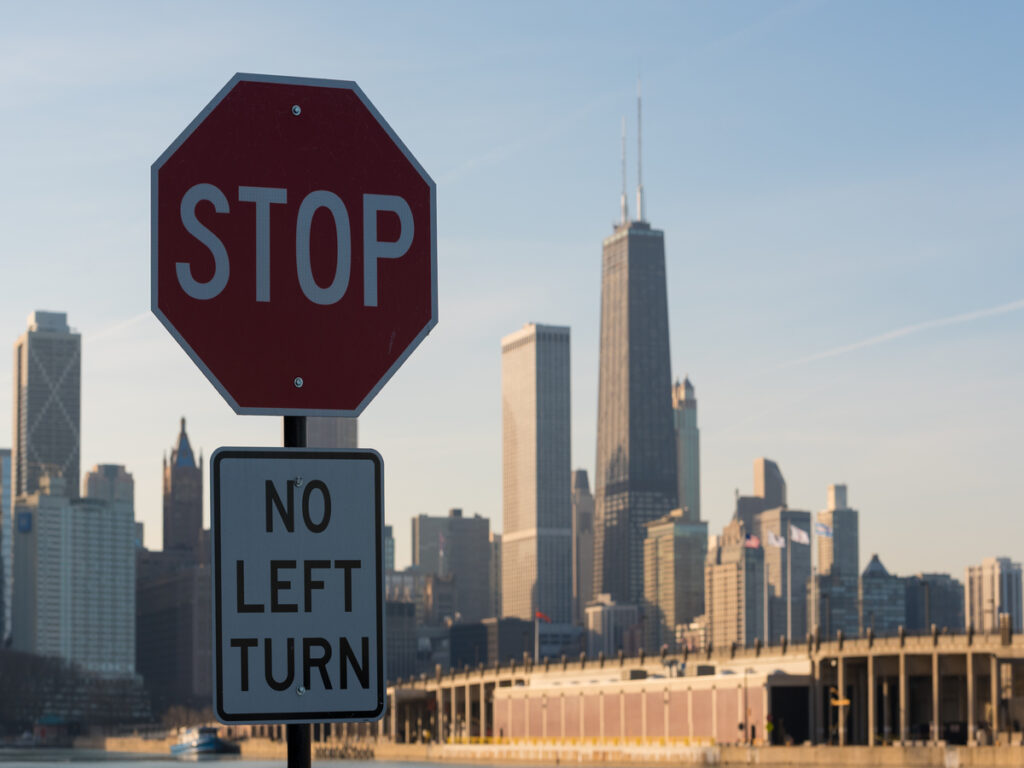
Wenn Sie ohne Erlaubnis ein Stoppschild aufstellen, Sie verstoßen gegen das Gesetz. Lokale und Landesregierungen erlauben dies nicht. Sie können eine große Geldstrafe bekommen, um ein Zeichen aufzustellen, das nicht erlaubt ist. An einigen Stellen, Sie könnten sogar eines Verbrechens angeklagt werden. Die Polizei kann Ihr Schild abnehmen und Ihnen ein Ticket geben. Wenn Sie ein Geschäft besitzen, Sie können Ihre Lizenz verlieren oder mehr Inspektionen haben.
Notiz: Geldstrafen für nicht autorisierte Zeichen können von stammen $100 über $1,000 Für jedes Zeichen. Einige Städte berechnen Sie jeden Tag, bis Sie das Schild niederschlagen.
Einige Strafen, die Sie bekommen könnten, sind:
- Für jedes illegale Zeichen Geld bezahlen
- Gesagt wird, sie sollen das Schild sofort abnehmen
- Zusätzliche Gebühren, wenn Sie keine Warnungen hören
- Mögliche Strafanzeigen, wenn Sie die Regeln weiter verstoßen
Sie sollten Ihre lokale Regierung immer fragen, bevor Sie ein Verkehrszeichen aufstellen. Dies hilft Ihnen, teure Fehler zu vermeiden.
Haftung und Sicherheit
Stoppschilder, die nicht erlaubt sind, können gefährlich sein. Die Fahrer glauben, dass jedes Stoppschild den Regeln folgt. Wenn Sie ein Schild an die falsche Stelle setzen, Fahrer können verwirrt werden. Diese Verwirrung kann zum Absturz oder engen Anrufe führen.
Wenn Ihr Zeichen einen Absturz verursacht, Sie könnten beschuldigt werden. Gerichte könnten sagen, dass Sie den Absturz durch verwirrende Fahrer verursacht haben. Versicherungsunternehmen dürfen den Schaden nicht bezahlen. Möglicherweise müssen Sie Verletzungen bezahlen, Autoreparaturen, oder sogar vor Gericht gehen.
🚨 Alarm: Nicht autorisierte Schilder können Straßen gefährlicher machen. Sie können die Fahrer aufhalten lassen, wenn sie es nicht sollten oder um echte Stoppschilder verpassen sollten oder verpassen.
Sie halten sich und andere sicher, indem Sie dem Gesetz folgen. Verwenden Sie immer Anzeichen, die genehmigt werden, und befolgen Sie alle Sicherheitsregeln. Dies hält Ihre Immobilie sicher und hilft allen auf der Straße.
Alternativen, um Zeichen zu stoppen
Temporäre Verkehrskontrolle
Es gibt viele Möglichkeiten, den Verkehr ohne dauerhafte Stoppschilder zu kontrollieren. Temporäre Verkehrssteuerungsgeräte helfen den Fahrern und dem Schutz der Arbeiter, wenn sich die Dinge ändern. Das kalifornische Verkehrsministerium schlägt vor, verschiedene Tools dafür zu verwenden:
- Verkehrskegel und Plastiktrommeln
- Tragbare Graben und Kanalisatoren
- Barrikaden und tragbare Schildunterstützung
- Absturzkissen und vorübergehende Hindernisse
- Blinkende Pfeilschilder und tragbare Beacons
- Automatisierte Flagger -Hilfsgeräte
Tipp: Machen Sie immer einen Plan, bevor Sie mit Arbeit beginnen. Gute Planung hilft Ihnen, die richtigen Werkzeuge auszuwählen und die Menschen zu schützen.
Studien zeigen, dass die temporäre Verkehrskontrolle gut funktioniert. In Fort Myers, Florida, Das Ändern der Signalzeiten während der Ereignisse half dem Verkehr besser, sich besser zu bewegen. Die Reisezeiten gingen vorbei vorbei 40%. Manuelle Verkehrskontrolle und Nachrichtenschilder halfen auch geschäftigen Straßen. Diese Ergebnisse zeigen, dass vorübergehende Lösungen Autos in Bewegung und niedrigere Risiken halten können.
Eine Stadt in Wisconsin benutzte Geschwindigkeitstische, um Autos in einer Nachbarschaft zu verlangsamen. Nachdem sie die Geschwindigkeitstische eingefügt haben, Weniger Autos schneiden durch und die Geschwindigkeiten gingen unter. Dies bedeutet.
| Standort | Problem | Lösung | Ergebnis |
|---|---|---|---|
| Sie tun es nicht, Wi | Geschwindigkeitsüberschreitung, Verkehrsverkehr | Geschwindigkeitstische | Niedrigere Geschwindigkeiten, Sicherere Straßen |
Verwenden von Verkehrskegeln
Verkehrskegel sind eine einfache Möglichkeit, Autos für kurze Zeit zu kontrollieren. Sie können Verkehrssicherheitszapfen nutzen, um:
- Blockieren Sie Arbeitszonen oder Gefahren
- Führung Autos um Umwege
- Bewahren Sie Arbeiter und Menschen sicher auf
- Halten Sie temporäre Verkehrskontrollschilder hoch
Moderne Werkzeuge wie Kameras und Sensoren helfen Ihnen dabei, zu sehen, wie Fahrer um Zapfen handeln. Sicherheitsexperten verwenden diese Informationen, um Arbeitszonen sicherer zu machen und Abstürze zu stoppen.
🚧 Alarm: Verwenden Sie immer Zapfen, die lokale Regeln für Größe und Farbe entsprechen. Setzen Sie sie dort an, wo die Fahrer sie sehen können, sogar nachts oder bei schlechtem Wetter.
Verkehrskegel funktionieren am besten mit anderen temporären Tools. Sie können ein sicheres und flexibles Setup für ein kurzes Projekt oder Ereignis durchführen. Jedoch, Es ist wichtig zu beachten. Um zu verstehen, wann und wo Sie sie verwenden können, Lesen Sie unseren Blog: Ist es für Privatpersonen legal, Leitkegel vor ihrem Haus aufzustellen??
Es gibt strenge Regeln für das Aufstellen von Stoppschildern auf öffentlichen Straßen. Sie können Stoppschilder auf privates Land setzen, wenn Sie lokale Regeln befolgen. Fragen Sie immer Ihre lokale Regierung, bevor Sie etwas tun. Viele Fahrer halten an jedem Stoppschild nicht den ganzen Weg an. Dies bedeutet, wie das Schild aussieht und wo es platziert wird, ist für die Sicherheit wichtig. Für kurzfristige Bedürfnisse, Verwenden Sie rechtliche Dinge wie Verkehrskegel. 🚦 Nach dem Gesetz hilft die Sicherheit der Menschen und spart Geld.
FAQ
Was sind die verschiedenen Arten von Stoppschildern?
Stoppschilder können sich im Wortlaut unterscheiden, Design, Farbe, und Platzierung je nach Land oder Region. Während die meisten das legendäre rote Oktagon mit verwenden “STOPPEN” auf Englisch, Andere können lokale Sprachen oder alternative Symbole aufweisen. Einige Länder verwenden selten Stoppschilder, sich stattdessen auf Kreisverkehre verlassen oder nachweisen.
Um diese Variationen zu untersuchen und zu lernen, warum sie wichtig sind, Schauen Sie sich unseren Blog an: Erforschen der verschiedenen Arten von Stoppschildern: Verständnis globaler Variationen und ihre Rolle in der Verkehrssicherheit.
Was ist das neue Stop Sign Law in Kalifornien??
In Kalifornien gibt es in Kalifornien kein neues landesweites Gesetz 2025. Jedoch, Einige lokale Gebiete haben Pilotprogramme eingeführt, um mehr All-Way-Stoppschilder in Schulzonen oder Schnittpunkten mit hohem Risiko hinzuzufügen, um die Verkehrssicherheit zu verbessern. Das kalifornische Gesetz verlangt immer noch, dass alle Fahrer bei Stoppschildern einen vollen Stopp machen und Fußgängern und anderen Fahrzeugen mit der Vorfahrt auf dem Weg nachgeben müssen. Fragen Sie immer bei den lokalen Behörden nach Aktualisierungen zu Verkehrszeichenvorschriften.
Was passiert, wenn Sie ein Stoppschild ohne Genehmigung installieren?
🚨 Sie könnten eine Geldstrafe erhalten, Lassen Sie Ihr Schild abnehmen, oder sich rechtlichen Schwierigkeiten haben. Wenn es einen Absturz gibt, Sie könnten beschuldigt werden. Erhalten Sie immer die Erlaubnis, bevor Sie offizielles Verkehrszeichen aufstellen.
Gibt es gesetzliche Alternativen zu dauerhaften Stoppschildern für kurzfristige Bedürfnisse?
Sie können Verkehrskegel verwenden, tragbare Zeichen, oder Barrikaden für die kurzfristige Verkehrskontrolle. Diese Tools helfen den Fahrern, während der Arbeit oder Veranstaltungen sicher zu bleiben. Befolgen Sie immer die lokalen Regeln für wo und wie man sie benutzt.

